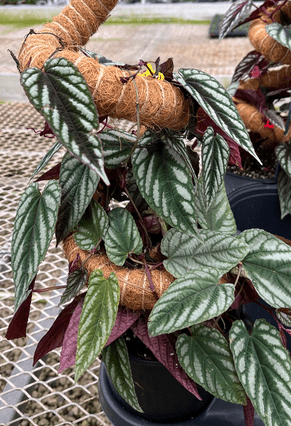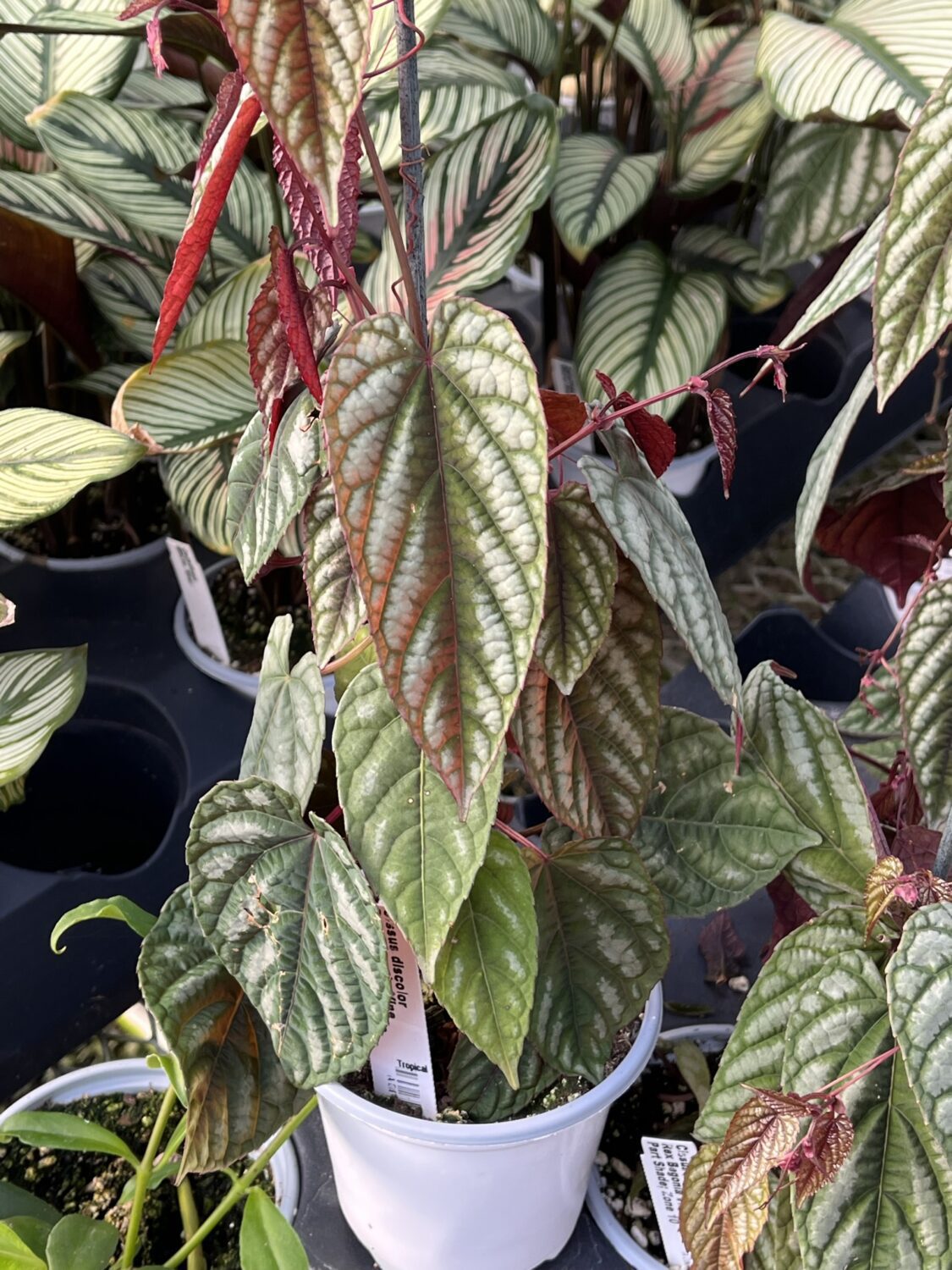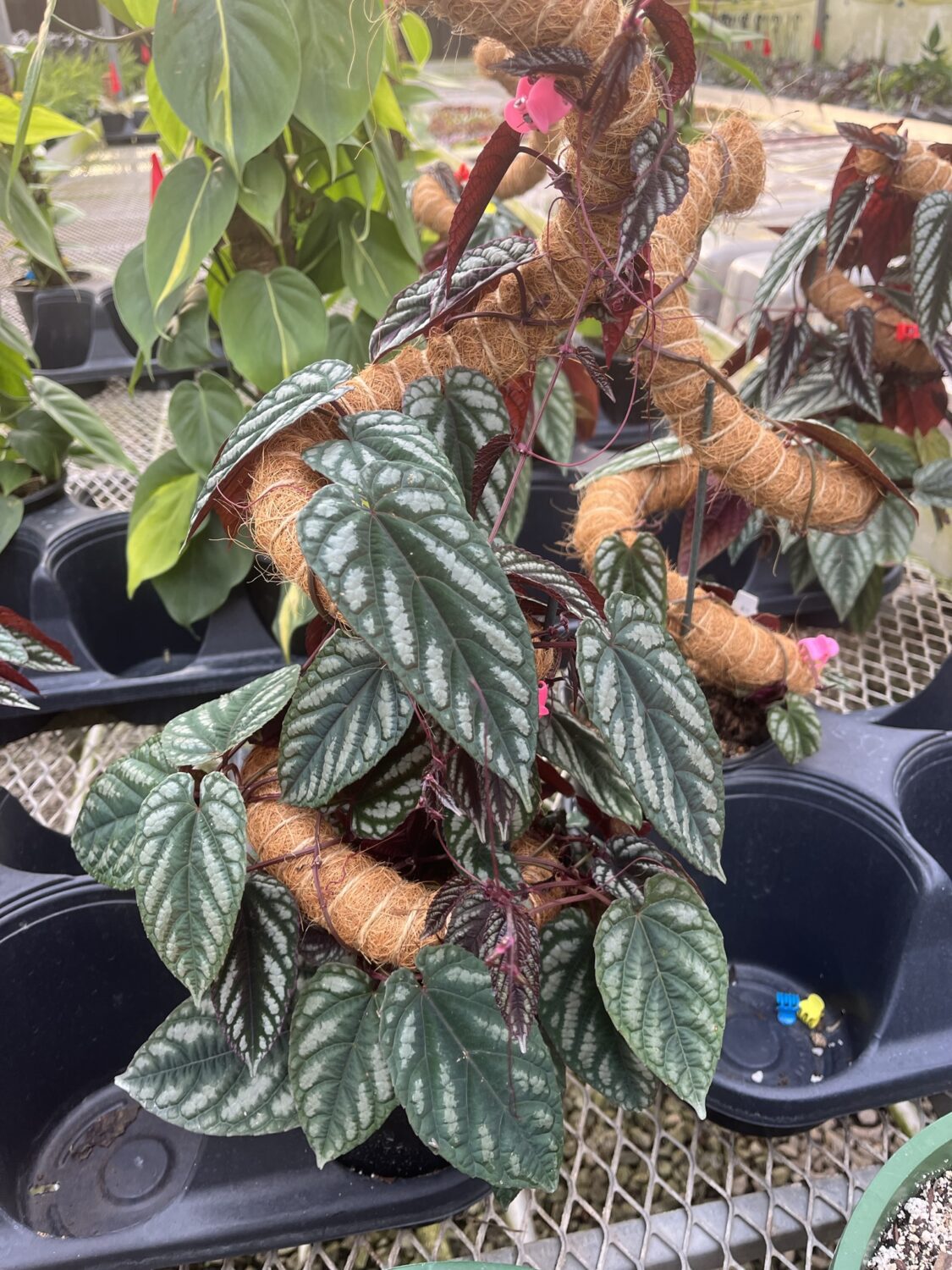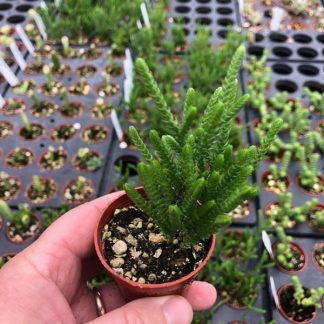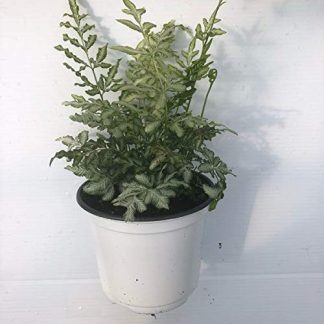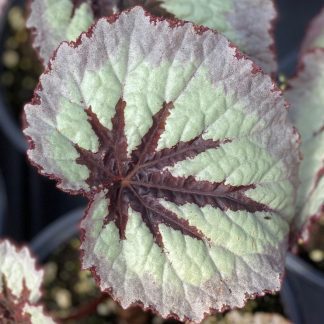Description
Cissus discolor (Silver Rex Begonia Vine): A Stunning Climber with Striking Foliage
Cissus discolor, commonly known as the Silver Rex Begonia Vine, is a breathtaking climbing plant prized for its velvety, multicolored leaves. While not a true begonia, its foliage mimics the dramatic patterns of Rex begonias — deep green backgrounds marked with silvery patterns and rich burgundy undersides. This tropical vine is perfect for indoor trellises, hanging baskets, and bright conservatories, bringing exotic elegance to any plant collection.
This guide explores everything about Cissus discolor — from its appearance and growth habits to detailed care tips, propagation methods, and creative ways to display this remarkable vine.
A Vine with Begonia-Like Beauty
Cissus discolor’s appeal lies in its leaves. Each heart-shaped leaf is velvety to the touch and features:
- Deep green background with silvery-white streaks forming intricate patterns.
- Rich burgundy undersides that glow when backlit.
- A slight metallic sheen that enhances its exotic look.
The leaves grow along slender, twining stems that climb or trail gracefully, making it versatile for hanging planters, moss poles, or decorative trellises.
Growth Habit and Size
- Type: Evergreen tropical vine
- Height/Length: Up to 8–10 feet long indoors with support
- Growth Rate: Moderate to fast in warm, humid conditions
- Habit: Climbing or trailing; stems twine around supports naturally
This plant creates a lush, cascading effect when grown in hanging baskets or can be trained vertically for dramatic foliage walls.
Light Requirements
Cissus discolor thrives in bright, indirect light. Too much direct sunlight can scorch its delicate leaves, while too little light leads to faded patterns and leggy growth. An east-facing window or filtered south/west light works well. Under grow lights, it adapts beautifully as part of an indoor plant collection.
Temperature and Humidity
- Ideal Temperature: 65–80°F (18–27°C)
- Minimum Tolerance: Should not drop below 55°F (13°C)
- Humidity: Prefers high humidity (50% or higher). Regular misting, pebble trays, or humidifiers help maintain leaf vibrancy.
This vine is native to tropical Asia and thrives in warm, moist conditions — mimicking rainforest understories.
Soil Requirements
Use a light, well-draining soil mix that retains some moisture but avoids waterlogging. A good blend:
- 2 parts peat or coco coir
- 1 part perlite
- 1 part fine orchid bark
This mix ensures aeration for roots while holding enough moisture to prevent stress.
Watering Needs
Cissus discolor enjoys consistently even moisture but should never sit in soggy soil. Water when the top inch of soil feels dry:
- Water thoroughly until excess drains out.
- Allow soil to partially dry before watering again.
- Reduce frequency in winter when growth slows.
Overwatering leads to root rot, while underwatering causes crispy leaf edges and leaf drop.
Feeding and Fertilization
Feed during the active growing season (spring and summer) with a balanced liquid fertilizer diluted to half strength every 2–3 weeks. In fall and winter, reduce feeding as the plant’s growth naturally slows.
Pruning and Training
- Pruning: Pinch back stems to encourage bushier growth and control length. Remove any dead or damaged leaves promptly.
- Training: Provide a trellis, moss pole, or hanging basket. Stems naturally twine and will readily attach to supports.
Regular pruning prevents legginess and keeps foliage dense and vibrant.
Repotting
Repot every 1–2 years in spring:
- Choose a pot 1–2 inches larger than the current one.
- Refresh soil to maintain nutrients and aeration.
- Handle roots gently — they are sensitive to disturbance.
Propagation Methods
Cissus discolor is most easily propagated by stem cuttings:
- Cut a healthy vine section with 2–3 nodes.
- Remove lower leaves and allow the cut to dry for a few hours.
- Place in water or moist soil until roots develop (2–4 weeks).
- Transfer to a small pot once well-rooted.
High humidity speeds rooting; covering cuttings with a plastic dome or bag can help.
Common Problems and Solutions
Leaf Drop
- Cause: Low humidity or sudden temperature changes
- Fix: Increase humidity and keep plant away from drafts
Leaf Curl or Crispy Edges
- Cause: Underwatering or very dry air
- Fix: Water consistently and raise humidity
Pale or Faded Leaves
- Cause: Insufficient light or nutrient deficiency
- Fix: Move to brighter light and fertilize regularly
Pests
- Common Culprits: Spider mites, mealybugs, aphids
- Treatment: Rinse foliage, isolate affected plant, and treat with insecticidal soap or neem oil
Seasonal Care
- Spring/Summer: Active growth; regular watering, feeding, and pruning
- Fall/Winter: Growth slows; reduce watering, maintain humidity, avoid cold drafts
- Year-Round: Rotate plant occasionally to promote even growth and balanced light exposure
Design and Display Ideas
- Hanging Baskets: Let the vines cascade dramatically over the edges for a tropical effect.
- Indoor Trellises: Train vines vertically to create a living art piece on walls or shelves.
- Mixed Planters: Pair with ferns, calatheas, or begonias for a lush, jungle-inspired arrangement.
- Conservatories or Greenhouses: Excellent as a feature plant with controlled humidity and temperature.
Why Gardeners Love It
- Exotic foliage: Silver markings and burgundy undersides make it look like living stained glass.
- Compact yet lush: Grows well indoors without overwhelming smaller spaces.
- Tropical appeal: Adds a jungle vibe to houseplant collections.
- Climbing versatility: Works equally well trailing or trained on supports.
A Jewel of Tropical Vines
Cissus discolor, the Silver Rex Begonia Vine, is a showstopper among indoor climbers. Its vivid foliage patterns and adaptable growth make it a perfect plant for anyone looking to add exotic flair and texture to their home or greenhouse.
Give it bright, filtered light, consistent moisture, and high humidity, and it will reward you with cascading vines of jewel-toned leaves — a living tapestry that evolves beautifully with each new tendril.

